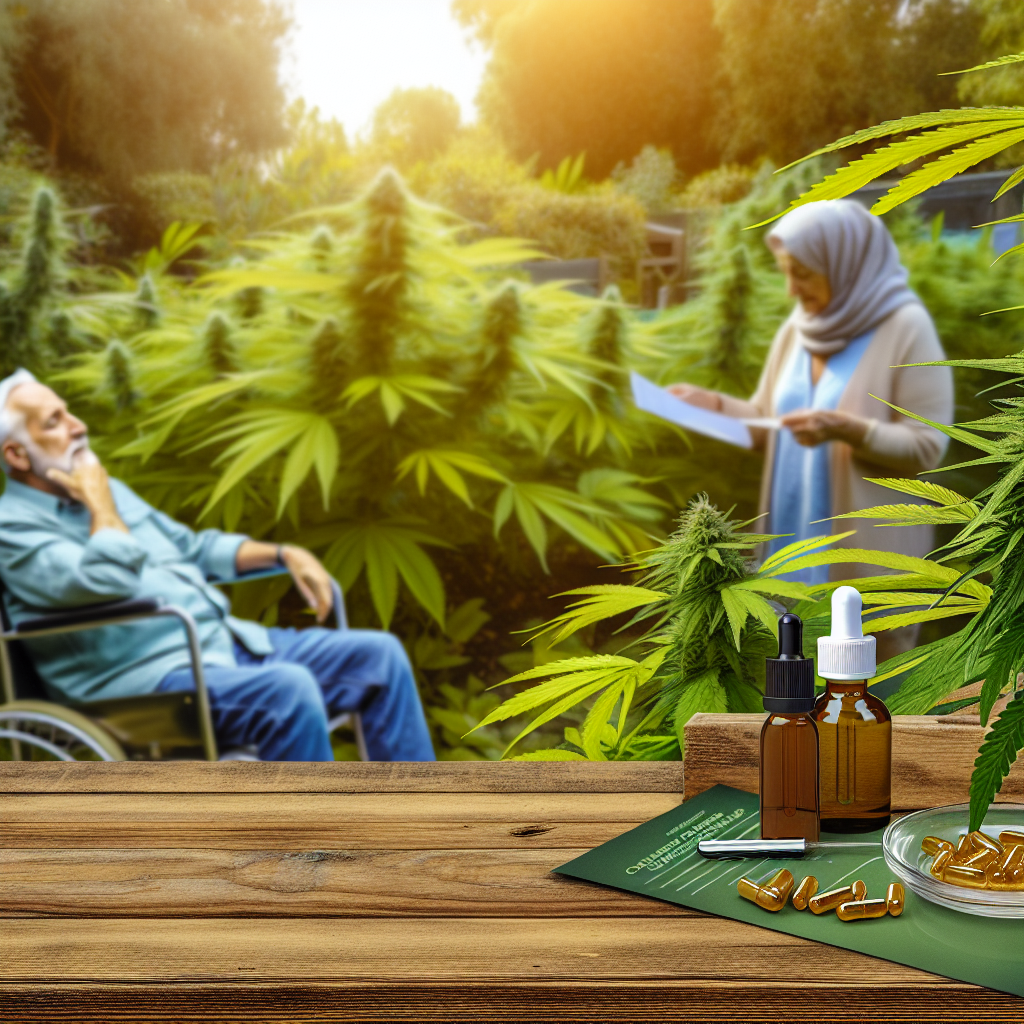Cannabis for Seniors: Age-Specific Dosing and Medication Considerations
The global conversation around cannabis is changing—and with it, a powerful new demographic is emerging: seniors exploring cannabis for therapeutic benefits. From managing arthritis and chronic pain to promoting better sleep and reduced anxiety, older adults are finding relief in the cannabis plant. But while interest grows, so does the need for thoughtful, age-appropriate guidance that considers the unique physiological challenges seniors face.
Why Seniors Are Turning to Cannabis for Wellness
Unlike younger users, many seniors are turning to cannabis not for recreation, but for relief. Common motivations include the management of:
– Chronic pain (e.g., arthritis, neuropathy)
– Sleep disturbances
– Anxiety and mood regulation
– Inflammation-related conditions
Cannabis works through the endocannabinoid system (ECS), a biological network responsible for regulating pain, mood, appetite, and inflammation. However, the ECS may decline in efficiency with age, making cannabis a potentially valuable supplement—but one that must be tailored to each individual.
Beyond therapeutic appeal, seniors also face risks. Age-related changes in organ function, ongoing health conditions like cardiovascular disease, and the prevalence of polypharmacy (simultaneous use of multiple drugs) all influence how cannabis interacts with the body. As a result, careful product selection and professional guidance are essential.
How to Use Cannabis Safely: Alternatives to Smoking
Because of respiratory concerns, many seniors choose non-inhaled cannabis formats. Popular alternatives include:
– Edibles (gummies, baked goods)
– Tinctures and liquid extracts
– Soft gel capsules
– Topical creams and salves
These options allow for precise, controlled dosing while avoiding respiratory risks. Another emerging trend is microdosing—using very small amounts of THC or CBD to achieve therapeutic effects without significant psychoactive impact. This method helps seniors reap symptom relief while minimizing the chance of side effects.
Medical Research: Cannabis Shows Promise for Seniors
Research focusing on cannabis use in older adults is finally gaining momentum—and the early results are promising.
One significant study published in the European Journal of Internal Medicine (2019), involving 2,736 patients aged 65 and older, found that:
– 93.7% reported improved symptoms (primarily pain and sleep)
– Adverse effects were minor and well-tolerated (e.g., dizziness, dry mouth)
These results suggest cannabis can be both safe and effective for seniors—when used with appropriate oversight and dosing strategies.
Start Low and Go Slow: Age-Specific Dosing Explained
The aging body processes drugs differently than younger counterparts. Seniors often have reduced liver and kidney function, which can extend the effects of cannabis and increase sensitivity—especially to THC.
As a general recommendation:
– Start with THC doses as low as 1–2.5 mg
– Increase gradually, only after assessing tolerance
– Consider CBD-dominant or balanced THC:CBD products
– Maintain regular check-ins with a healthcare provider
This conservative titration helps avoid unwanted side effects while optimizing therapeutic results.
Reducing Opioid Use and Other Medications
Cannabis may also serve as a harm-reduction tool in senior populations, many of whom rely on opioids and other medications with heavy side effect profiles.
In a 2020 study in Drugs & Aging, cannabis use led to:
– Improved management of osteoarthritis and neuropathic pain
– Better sleep outcomes
– Reduced reliance on opioids
These findings point toward cannabis not just as an additive therapy, but potentially as a replacement for more dangerous interventions—if integrated properly.
Managing Drug Interactions: What Seniors (and Providers) Must Know
Polypharmacy remains one of the biggest concerns. Cannabinoids—particularly CBD—can modify the activity of cytochrome P450 enzymes, which are responsible for metabolizing many prescription drugs, including:
– Blood thinners (e.g., warfarin)
– Sedatives and tranquilizers
– Antidepressants and mood stabilizers
For this reason, any senior considering cannabis must first consult a qualified healthcare professional. A detailed medication review can help prevent dangerous interactions and ensure a safe integration of cannabis into their wellness plan.
Choosing the Right Products: Talk to a Cannabis Professional
Dispensary staff and cannabis consultants play a vital role in helping seniors make informed choices. Important product considerations include:
– Accurate cannabinoid content (THC:CBD ratio)
– Terpene profile (influences effects like sedation or alertness)
– Onset and duration time
– Recommended usage formats
Topicals infused with menthol or camphor, for instance, are ideal for joint pain and arthritis relief—providing targeted benefits without entering the bloodstream.
Empowering Seniors Through Cannabis Education
Education is key to overcoming stigma and misinformation. Many seniors are new to cannabis and may be nervous about trying it. Offering workshops, printed guides, and one-on-one consultations can bridge the knowledge gap and promote safe usage.
As more evidence emerges, and legalization expands, healthcare providers and cannabis professionals must step up to provide clear, research-backed information tailored to the needs of older adults. This isn’t just a new market—it’s a community seeking relief, dignity, and improved quality of life.
Conclusion: A New Chapter in Senior Health and Wellness
Cannabis has the power to enhance the lives of seniors, but it requires a mindful, individualized approach. With expert guidance, appropriate dosing, detailed medication reviews, and product education, older adults can explore cannabis safely and effectively.
As cannabis gains broad cultural acceptance, it’s time we dedicate the same attention, research, and compassion to serving the wellness goals of older adults. The opportunity is immense—and the need is urgent.
Summary:
As the global cannabis conversation evolves, a new demographic is emerging: seniors exploring cannabis for therapeutic benefits. From managing chronic pain and sleep disturbances to reducing anxiety, older adults are finding relief in the cannabis plant. However, careful guidance is essential, as seniors face unique physiological challenges and medication considerations. This article explores age-specific dosing, alternatives to smoking, the latest medical research, and strategies for empowering seniors through cannabis education.
References:
– [National Survey on Drug Use and Health (NSDUH) – Trends in marijuana use among older adults](https://www.samhsa.gov/data/)
– [Abuhasira, R., et al. (2018). “Epidemiological characteristics, safety and effectiveness of medical cannabis in the elderly.” *European Journal of Internal Medicine*, 57, 75–78.](https://doi.org/10.1016/j.ejim.2018.09.010)
– [Bhaskar, A., et al. (2021). “Cannabis in pain treatment: clinical and research considerations.” *Drugs & Aging*, 38(3), 225–235.](https://doi.org/10.1007/s40266-020-00824-6)
– [MacCallum, C. A., & Russo, E. B. (2018). “Practical considerations in medical cannabis administration and dosing.” *European Journal of Internal Medicine*, 49, 12–19.](https://doi.org/10.1016/j.ejim.2018.01.004)




